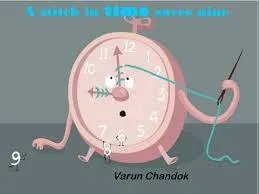
An Ounce of Prevention: A Forgotten Wisdom
My mother was a woman of practical wisdom, often expressed in the form of proverbs. One that stuck with me was the timeless adage, "An ounce of prevention is worth a pound of cure." It’s a phrase as old as time, yet its relevance seems to have waned in our modern, fast-paced world. Today, we find ourselves in a perpetual state of crisis management, reacting to problems rather than anticipating and preventing them.
Crises, whether personal or societal, are the norm rather than the exception. This reactive approach to life, unfortunately, mirrors our approach to healthcare. Cardiovascular disease (CVD) reigns as the number one killer in the United States, yet the focus remains disproportionately on treatment rather than prevention. The narrative is often one of shock and disbelief: "He was so healthy; it came out of nowhere." But the truth is, there's no such thing as a sudden heart attack. Years, even decades, of underlying issues like inflammation, eye disease, and erectile dysfunction in men can foreshadow this catastrophic event. To dismiss red flags like these as isolated incidents is to ignore the body’s desperate plea for attention.
The proverb "A stitch in time saves nine" echoes this sentiment. By addressing small issues early on, we can prevent larger, more complex problems from developing. This is a concept that seems to have been lost in the shuffle of our healthcare system.
The stark reality is that the U.S. spends a staggering amount on chronic and crisis care compared to prevention. A 2018 study by the Centers for Disease Control and Prevention (CDC) revealed that chronic diseases—such as heart disease, stroke, cancer, and diabetes—and their risk factors account for more than 80% of U.S. healthcare costs. In contrast, prevention efforts receive a fraction of this funding.
A contrasting picture emerges when we look to European countries. Many have implemented robust public health programs focusing on prevention and early intervention. The result? Lower rates of chronic disease and, ultimately, lower healthcare costs.
The incentives within the U.S. healthcare system exacerbate the problem. Providers are often rewarded for treating illness, not preventing it. Fee-for-service models encourage a reactive approach, prioritizing procedures and medications over wellness. This creates a system where the sicker the patient, the more lucrative the business.
It's a stark contrast to ancient Chinese medicine, where practitioners were only paid as long as their patients remained healthy, creating a direct financial interest in wellness. This model aligned the interests of the healer with the health of the community.
At Sankofa, we believe in a return to this preventive approach. Our customized wellness programs are built on comprehensive risk assessments, identifying potential health issues before they become crises. Our Health Assurance Guarantee is a tangible expression of our commitment to prevention, offering financial relief and continued support during times of illness. We pause program fees during a client's critical illness until health is restored.
Our current health care approach is unsustainable. Now is the time to shift our focus from crisis management to proactive wellness.. We must invest in prevention, not just treatment. By adopting a proactive approach, we can improve individual health, reduce healthcare costs, and build a healthier society.
Benjamin Franklin's wisdom remains as relevant today as ever. Let’s heed his advice and prioritize prevention. Your health is worth it.
Are you ready to prioritize prevention and take control of your health? Schedule a call with us today to learn more about our preventive approach and how we can help you live a longer, healthier life.
References:
Centers for Disease Control and Prevention (CDC). (2018). Chronic Disease Prevention and Health Promotion. https://www.cdc.gov/chronic-disease/index.html
World Health Organization (WHO). (2018). Primary Prevention of Noncommunicable Diseases. https://www.who.int/news-room/fact-sheets/detail/noncommunicable-diseases
The Commonwealth Fund. (2023). International Health Policy Survey. https://www.commonwealthfund.org/programs/international-health-policy-and-practice-innovations
American Heart Association. Heart Disease and Stroke Statistics - 2023 Update. https://www.ahajournals.org/doi/10.1161/CIR.0000000000001123

© 2023 Sankofa Healing and Enrichment, Inc. - All Rights Reserved,
(850) 273-8786
